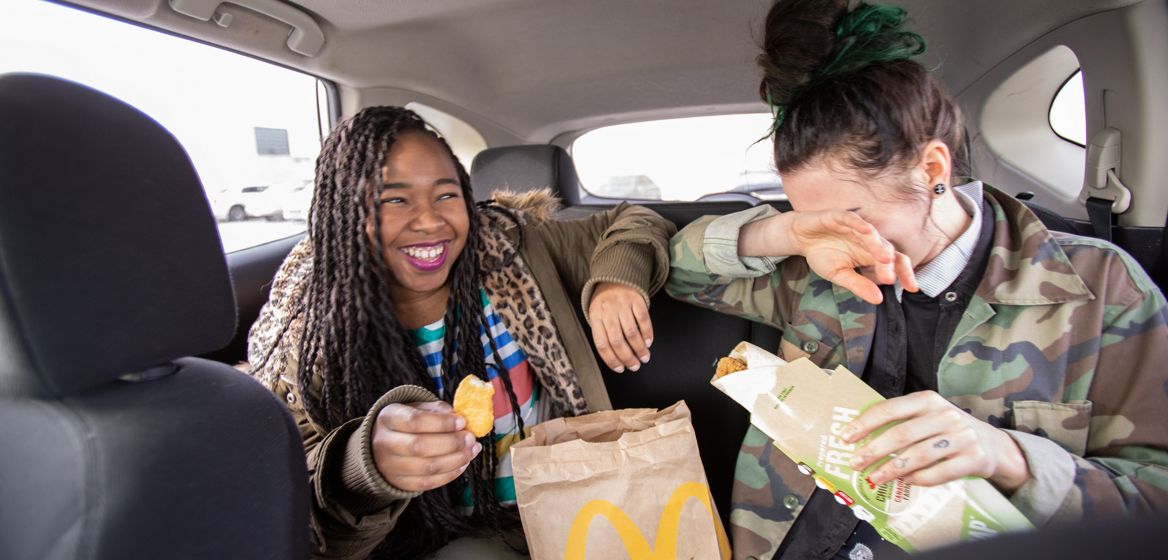Women’s History Month Spotlight: Three Lessons in Consumer Engagement
August 26, 2020
By Elizabeth Campbell, Senior Director, Cultural Engagement
For nearly seven decades, McDonald’s has been one of the most respected companies and recognized brand names in the world.
McDonald’s was a staple in my household. Every Friday night, almost without exception, my dad would come home from a long work week, and we’d go get McDonald’s for dinner (and believe me—if the routine skipped a week, there were tears). It was a place my family and I loved as much for the role it played in our Friday night traditions as for its delicious French Fries—a love that’s still shared by countless customers in the thousands of diverse communities we serve.
As the Senior Director of Cultural Engagement at McDonald’s, I am humbled by my responsibility for engaging our customers and driving that same level of fandom for the Golden Arches. In my role, I have specific responsibility for maintaining brand relevance across our emerging customer base, including the African American, Asian American, Hispanic American, and LGTBQ+ communities.
When I’m with friends and family, they often ask me about the secret sauce behind marketing an iconic brand. Over the last year, those conversations have shifted to focus on how a company like McDonald’s shows up for customers and stays relevant in the midst of a pandemic, social unrest and a movement for racial and economic justice.
For me, the answer lies in three lessons I’ve learned about our Brand from the local franchisees who own and operate McDonald’s restaurants, colleagues inside the company, and our trusted agency partners, including Alma, Burrell, IW Group, and Wieden & Kennedy.
First, before you talk the talk, you’ve got to walk the walk. To be stewards and advocates for your customers, it’s important to show up in their lives and make a difference in their communities.
To earn the right to ask our customers to commit to us, we need to first commit to them.
One area on which we’re focused as a company is making a bigger impact by providing equity of opportunity in educating young people. Over 30 years ago, one of our franchisees started the Hispanic American Commitment to Education Resources (HACER) scholarship, which has since awarded $31.5 million to Hispanic college students pursuing their higher education dreams.
Building on these efforts, in 2019, McDonald’s partnered with APIA Scholars, the nation’s largest non-profit organization that provides college scholarships to Asian and Pacific Islander American college students in need. At a time when just one in four Native Hawaiians, Pacific Islanders, and Southeast Asian Americans have college degrees and the top 10 percent of APIAs earn more than 10 times the least advantaged, we launched a new scholarship program to narrow those disparities while helping more APIA youth go to college.
Also in 2019, we launched a refresh of our more than 15-year-old 365 Black program, which we named Black and Positively Golden. In partnership with McDonald’s Black franchisees, this significant marketing initiative seeks to uplift communities by shining a powerful light on Black culture while celebrating Black excellence through education, empowerment, and entrepreneurship. The program continues to expand with the addition of the Black & Positively Golden Mentors program, which pairs industry leaders with up-and-coming changemakers in the same fields.
These relationships matter. With restaurants in 36,000 communities across the world, through which we serve 65 million people a day, McDonald’s has a geographic and emotional footprint that is unmatched in almost any industry. Fostering these relationships is how we show up in peoples’ lives and make a difference.
Second, you’ve got to be in it for the long haul. To participate in public conversations with diverse audiences, you must earn the right by being engaged with the causes important to them.
Sixty-six years ago, McDonald’s was founded on the hope that every member of the McDonald’s family would live by their own sense of possibility—and that local owners who were from local communities would best understand the needs of those communities and work to be a good neighbor.
No organization is perfect, but if this last year has reinforced anything, it is the imperative that brands must have more empathy for consumers. We have an obligation to understand what’s going on in the lives of customers and ask them for permission to be in their world—and if we fall short of their expectations, we’ve got to admit it and work to change it.
This past year, we embarked on an effort to refresh our values to meet the evolving needs of our customers. Part of that work involved recognizing we had more to do to be a leader on diversity, equity, and inclusion. For over a year, we listened and learned, and then launched industry-leading new DEI goals to increase representation of historically underrepresented groups in senior leadership roles. We are measuring progress and holding senior leaders accountable for results.
Those values serve as our North Star for how we engage with our communities. When events happen that strike at the heart of our core values, we need to speak out.
The horrific killing of George Floyd last year was more than a crime against humanity—it was a brutal reminder that racism, inequity, and injustice can’t be tolerated by anyone, anytime, or anywhere. I was incredibly proud when McDonald’s made unequivocally clear that an act of hate against any of us is an attack on all of us, and we must all play a role in stopping it.
A campaign we ran last year on the responsibility we all have to speak out, called “One of Us,” helped give voice to what so many of our customers and communities were feeling, and gave me renewed perspective on the impact of putting our values into actions. This month, I’ve been equally proud of our stand against anti-Asian hate and violence and our commitment to uplifting the communities we serve. Consumers know that we are serious about the issues that matter to them.
If you’re not authentic, customers will know. That’s why, before McDonald’s engages in social media conversations or speaks to community concerns through our marketing, we first assess whether it’s an area for us to communicate. If consumers say, “McDonald’s, you haven’t earned the right to engage us in this conversation,” we don’t try to force it. But you’d better believe we try to be honest about why we’re falling short and then work to address it.
Third, while you can learn much about a brand from the inside, insights from the outside are equally vital to unlock genuine connections with customers.
Our work with minority-owned agency partners and media goes back half a century when we realized that building a direct relationship with diverse customers meant being relevant on every channel where they were interacting with and experiencing the culture. Key to unlocking that relevance is working with partners that are experts in helping us creatively communicate through those channels.
For example, when I joined McDonald’s 17 years ago, I learned that “Mickey D’s” was a term coined in 1976 by advertising legend Tom Burrell and his partners at Burrell Communications, one of the oldest and most revered multi-cultural advertising and marketing firms in the world. Whether working with the IW Group to create the first McDonald’s website exclusively for Asian American and Pacific Islanders nearly 20 years ago as the first of dozens of campaigns geared toward the AAPI communities; or partnering with Alma to launch a dedicated activation for Hispanic consumers around music and sports, while increasing the amount of Hispanic consumer market content we place on Hispanic-owned media, we are communicating in the places most important to our customers.
While we have a strong foundation, we know there is always more work to do. That’s why we have committed to deepening these relationships by increasing our advertising and marketing spend with new and existing partners to meet the changing needs of our customers.
In 2021, we are increasing our overall support to minority-owned media companies by 42 percent and aim to reach a 60 percent increase by 2025. As always, we seek to collaborate with the industry and media partners that give us the best chance of reaching our core customer audiences that provide the highest return on our investment, and that make us as competitive as possible in the markets we serve. Our customers deserve nothing less.
Maybe more than anything, the secret sauce to being a great marketer today is being willing to listen and learn from customers, in a world being reshaped by COVID and its aftermath. It is being on top of the data but also balancing that with the head and the heart to make a difference in their lives.
I miss those Friday night dinners with my family at McDonald’s, as both of my brothers tried to steal my fries (and almost always failed). But I know that every night, there are millions of other families just like mine. They, too, will sit down to a meal together around a big bag with those Golden Arches, holding the most craveable food imaginable. These are the delicious, feel-good moments they’ll never forget. It is for them that I do what I do—especially for that young girl right now keeping her fries from her brother.

